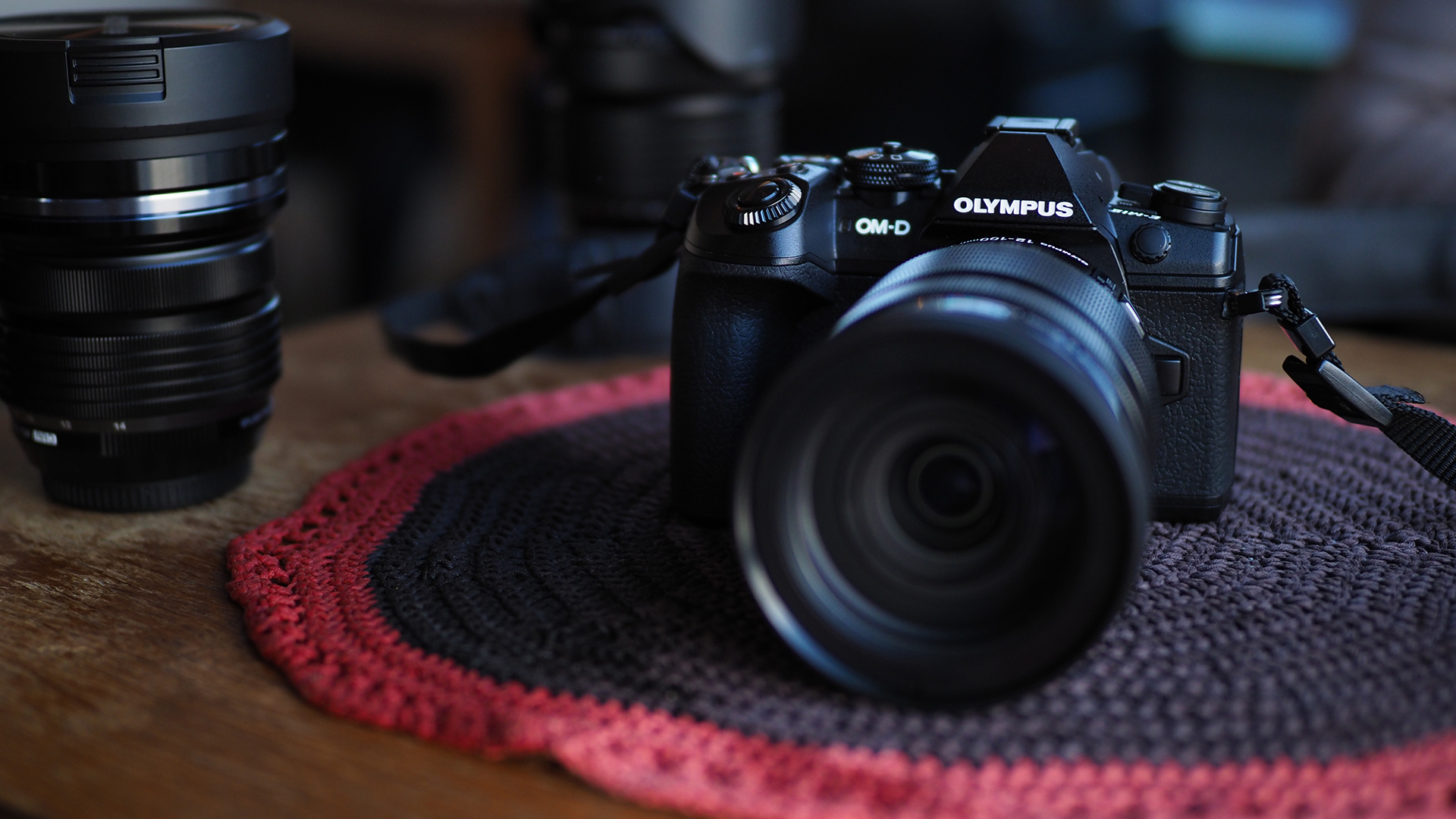Why you can trust TechRadar
Build
- Magnesium alloy construction
- Dust, splash and freezeproof weather-sealing
- 574g
At first glance the OM-D E-M1 Mark II looks almost identical to its predecessor. Almost nothing about the camera’s look has changed aside from a slightly taller chassis and mode dial. Whereas the Mark II versions of both the E-M5 and E-M10 featured dramatically redesigned grips and dials, Olympus has stuck with almost the same ergonomics on its flagship camera.
While the aesthetics are very similar, the E-M1 Mark II is actually both larger and heavier than the Mark I. The new camera measures 134.1 x 68.9 x 90.9mm (W x D x H) and weighs 544g with the battery and memory card included, which is noticeably bulkier than the original 130.4 x 93.5 x 63.1mm E-M1, which tipped the scales at 497g.
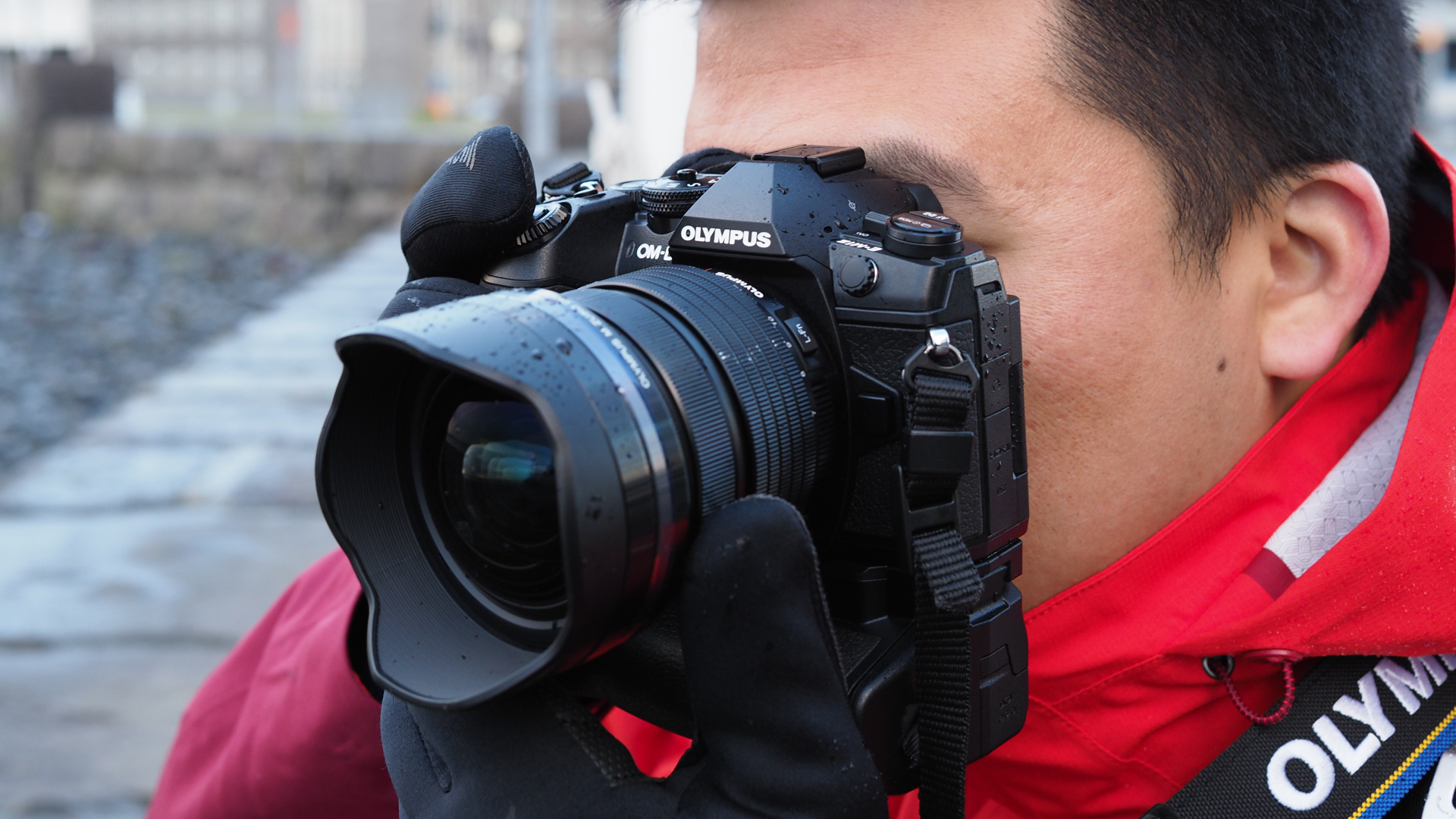
Despite the increase in size, the extra weight of the E-M1 Mark II doesn’t become an issue when shooting with it over a full day. We also prefer the beefed-up proportions of the new E-M1, as it can better support larger Micro Four Thirds lenses such as the recent M. Zuiko 25mm f/1.2 and M. Zuiko 12-100mm f/4.
Thanks to being taller, the Mark II also feels and looks a little less awkwardly squat than the original version.
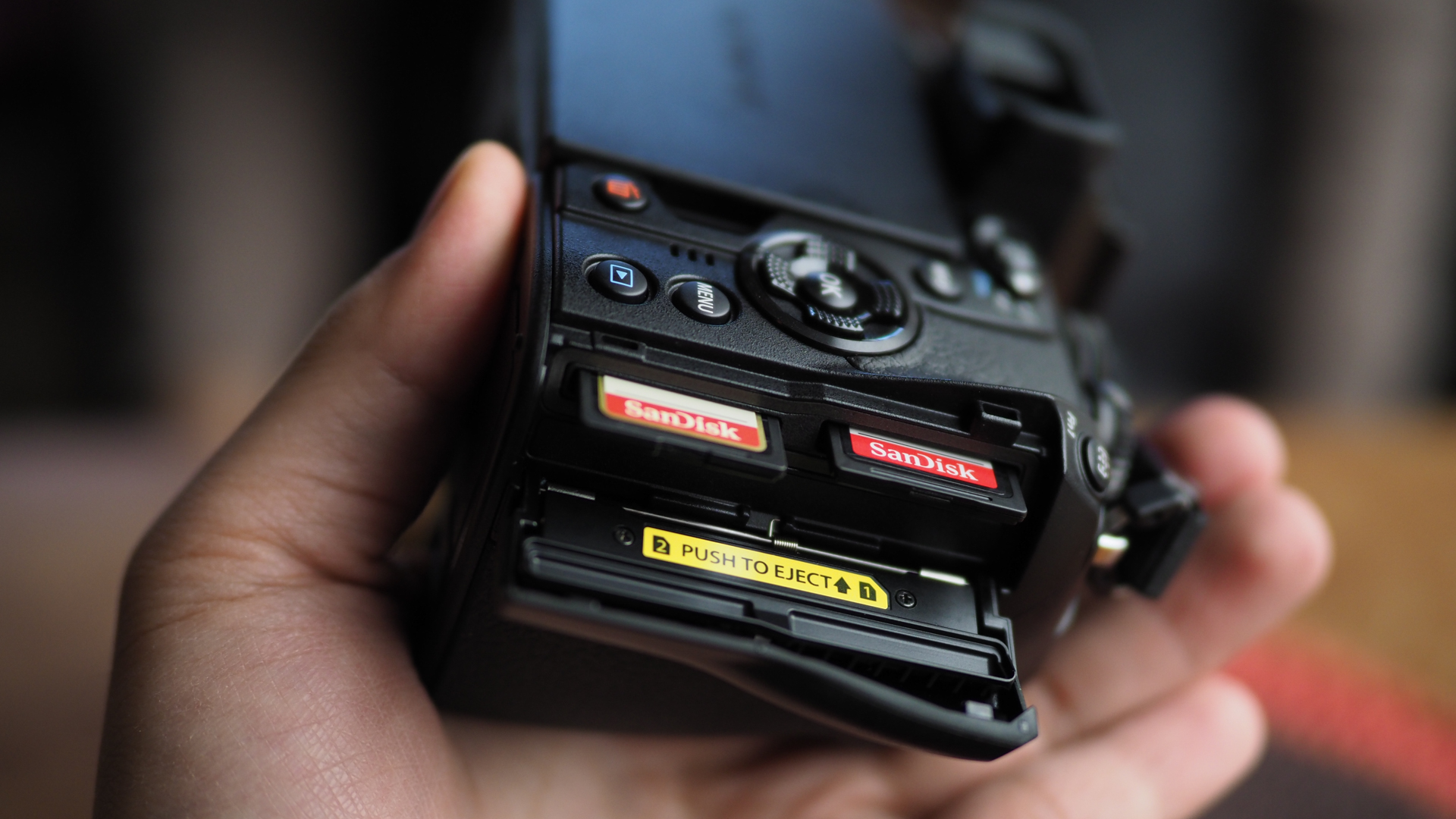
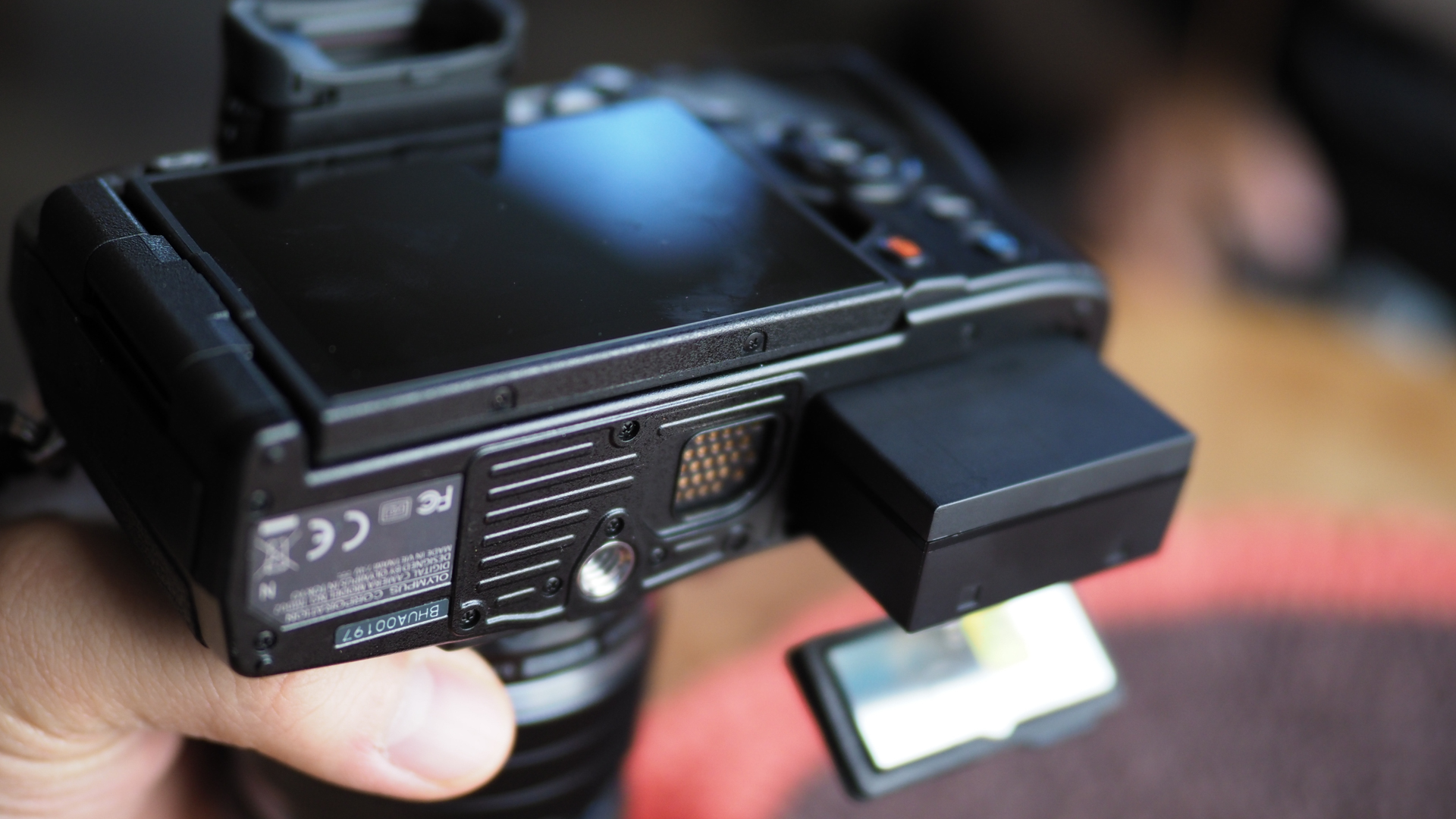
The larger dimensions make way for an additional SD card slot and a larger battery – sorry, veteran Olympus users, your old batteries won’t work with this new camera, but on the plus side the new cells offer 37% more capacity at 1,720mAh of power.
As with Olympus’ other OM-D cameras, the updated E-M1 has traded its tilting screen for one that also swivels out to the side, offering a wider range of possible positions to angle it at.
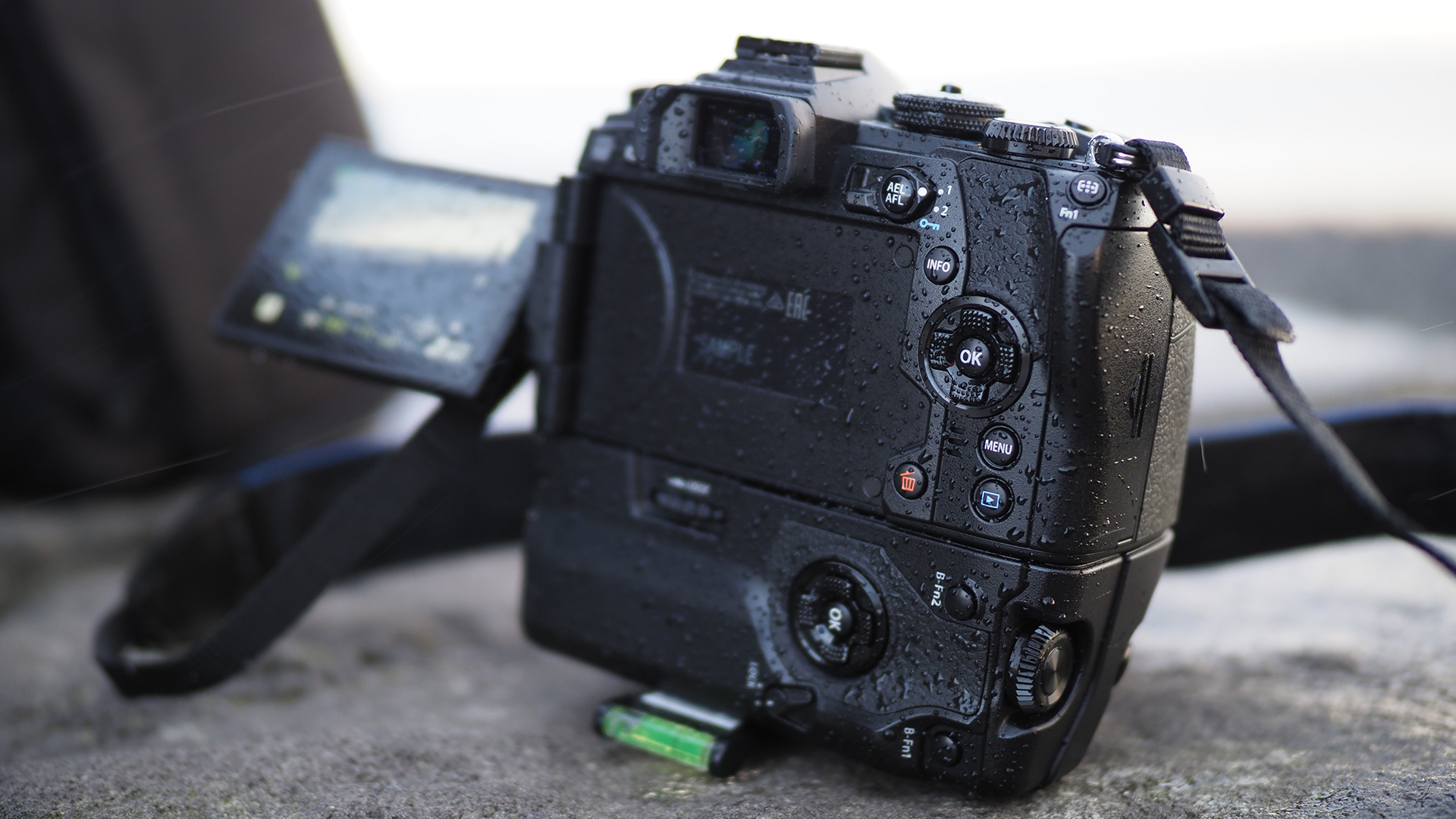
Handling
In hand the E-M1 Mark II feels completely solid while still being smaller than most mirrorless cameras. Fashioned entirely out of magnesium alloy, the E-M1 Mark II is as tough as a tank despite having a more svelte form than the bulbous Panasonic Lumix GH4.
Furthermore, this MFT shooter is fully weather-sealed against rain, dust and freezing (to 14°F / -10°C) and we can say the camera lives up to these claims. Whether it was peanut-sized hail or freezing rain, the E-M1 Mark II just kept on shooting, even in the most punishing storms of Iceland, where we tested the camera.
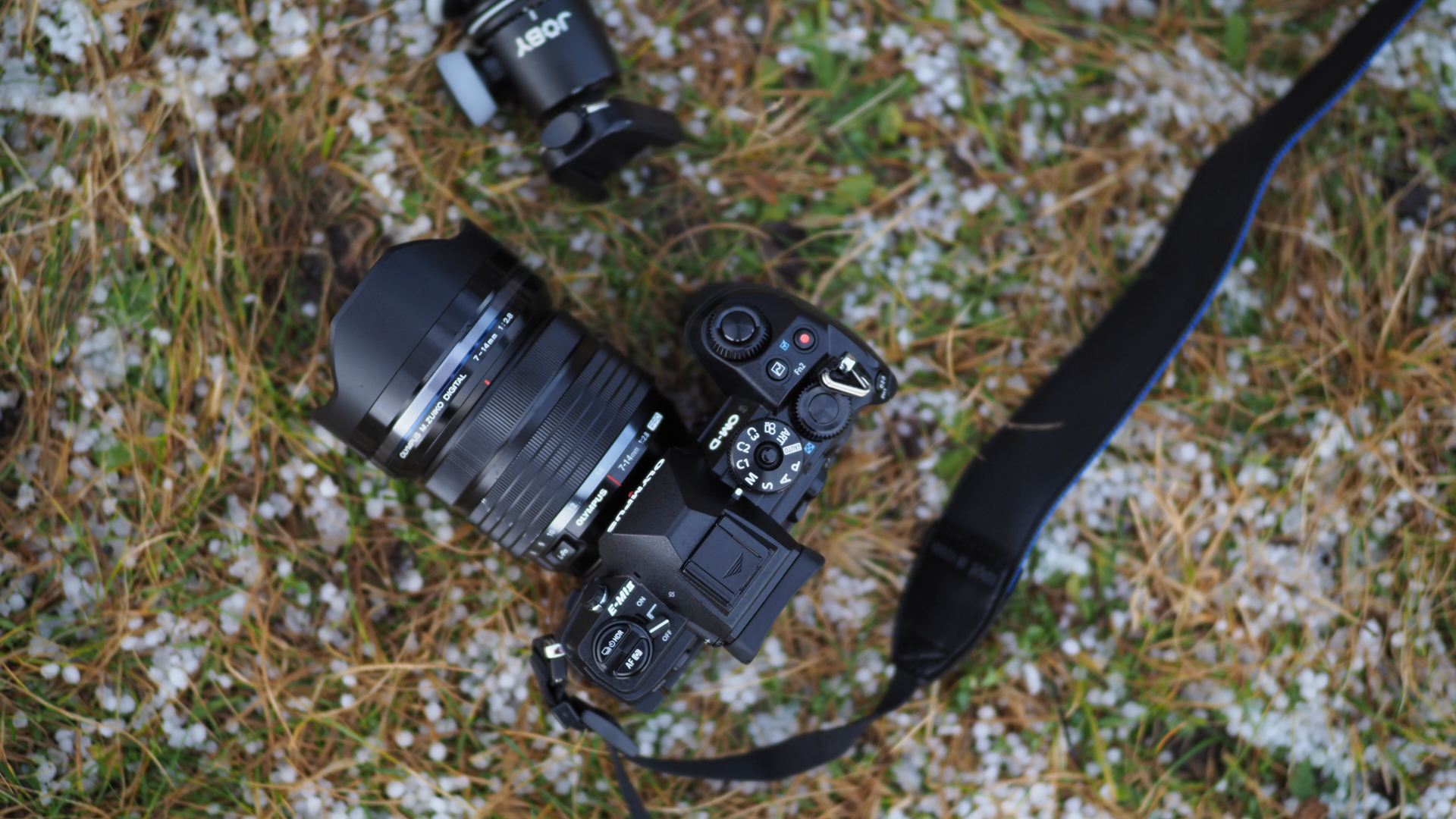
For the most part the dials and buttons of the original E-M1 have stayed firmly in their place except for the menu button, which is now sits directly above the playback button to make way for a notch to access the flexible LCD screen.
Olympus has also raised the 4-way buttons on the back of the camera to make them easier to press, even with a pair of gloves on – we wish it would have done the same with the 'OK' button buried in the middle of the four-way interface, as it’s used often to access the quick settings in the Super Control Panel.
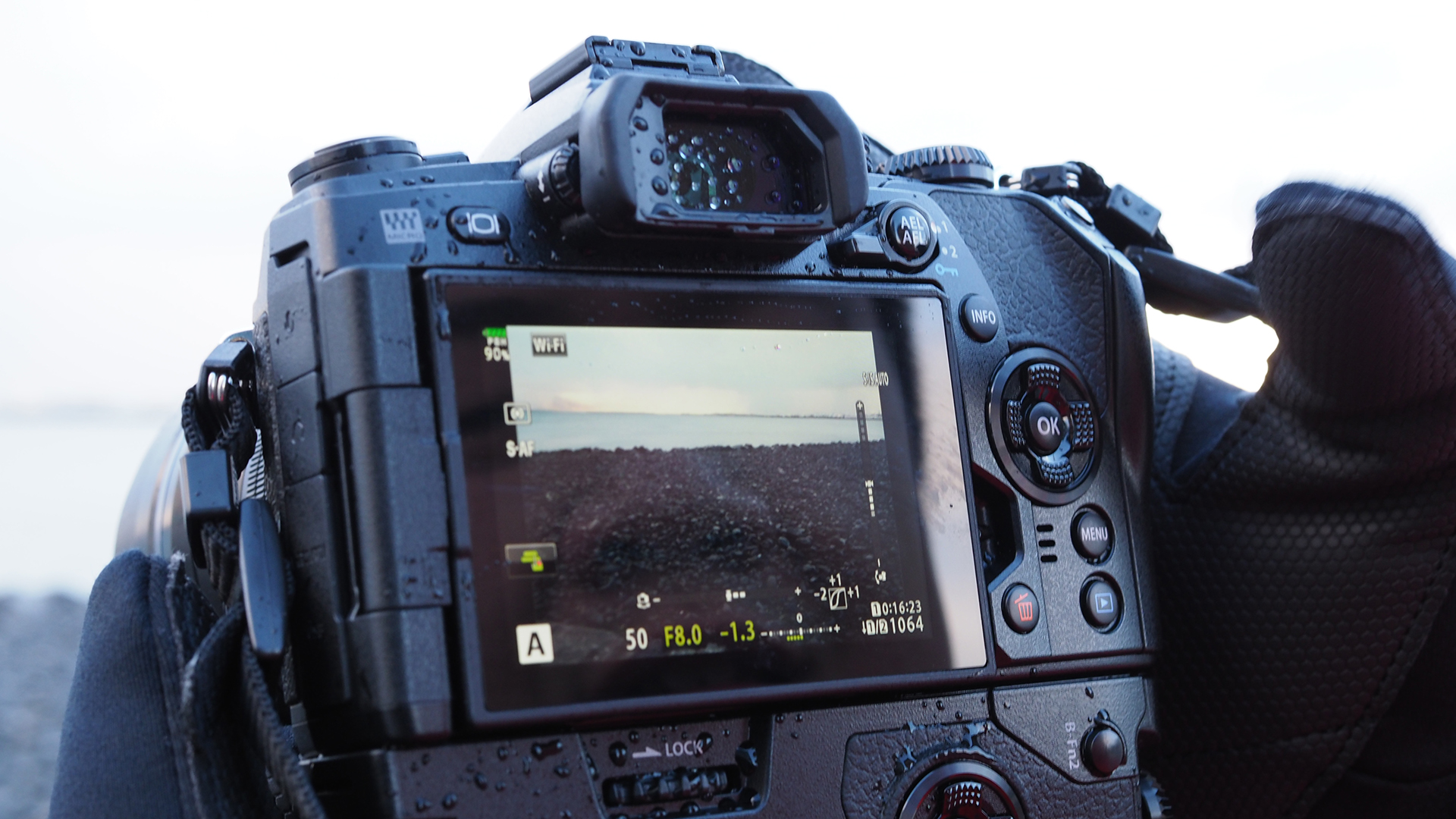
Luckily the OM-D E-M1 Mark II comes with an extreme degree of customizability, enabling you to assign functions to each dial and button. This includes one fairly outlandish idea: reassigning the toggle on the back from swapping control schemes to being the on/off switch for easier one-handed camera operation.
What’s more, you can even make navigating menus easier by switching off shortcuts and functions you never use – a handy feature if you’re tired of jogging through over a dozen different drive modes when you only use Sequential High and a handful of other settings.

Autofocus
- 121-point cross-type Dual Fast AF
- Face/eye-detection autofocus
- C-AF lock (5 steps), AF scanner (3 types)
With 121 autofocus points that offer both contrast and phase detection, the E-M1 Mark II features Olympus’ most expansive autofocus system yet.
On paper this might not sound as impressive as the AF system seen on other mirrorless systems like the Sony A6500 (425 phase-detection and 169 contrast-detection points) or even Fujifilm X-T2 (169 phase-detection and 156 contrast-detection).
But keep in mind that the Micro Four Thirds sensor is considerably smaller while resolving a greater depth of field, no matter how large your aperture is – two factors that make it easier for cameras in this format to find focus.

Olympus cameras have always been quick on the draw when it comes to focusing, but the Mark II feels noticeably faster. Tracking a subject is almost effortless, except for when it's moving erratically across the frame. The AF also performs better in low light, thanks to the fact that both types of AF detection are available across the entire frame.
The autofocusing improvements are most dramatic while shooting video. In our testing we were able to walk alongside our subject at night with Olympus’ new M. Zuiko 25mm f/1.2 lens and keep them in focus even with the lens wide open at f/1.2, while only a few street lights help provide illumination.
Current page: Build, handling and autofocus
Prev Page Introduction and features Next Page Performance and image qualityKevin Lee was a former computing reporter at TechRadar. Kevin is now the SEO Updates Editor at IGN based in New York. He handles all of the best of tech buying guides while also dipping his hand in the entertainment and games evergreen content. Kevin has over eight years of experience in the tech and games publications with previous bylines at Polygon, PC World, and more. Outside of work, Kevin is major movie buff of cult and bad films. He also regularly plays flight & space sim and racing games. IRL he's a fan of archery, axe throwing, and board games.
